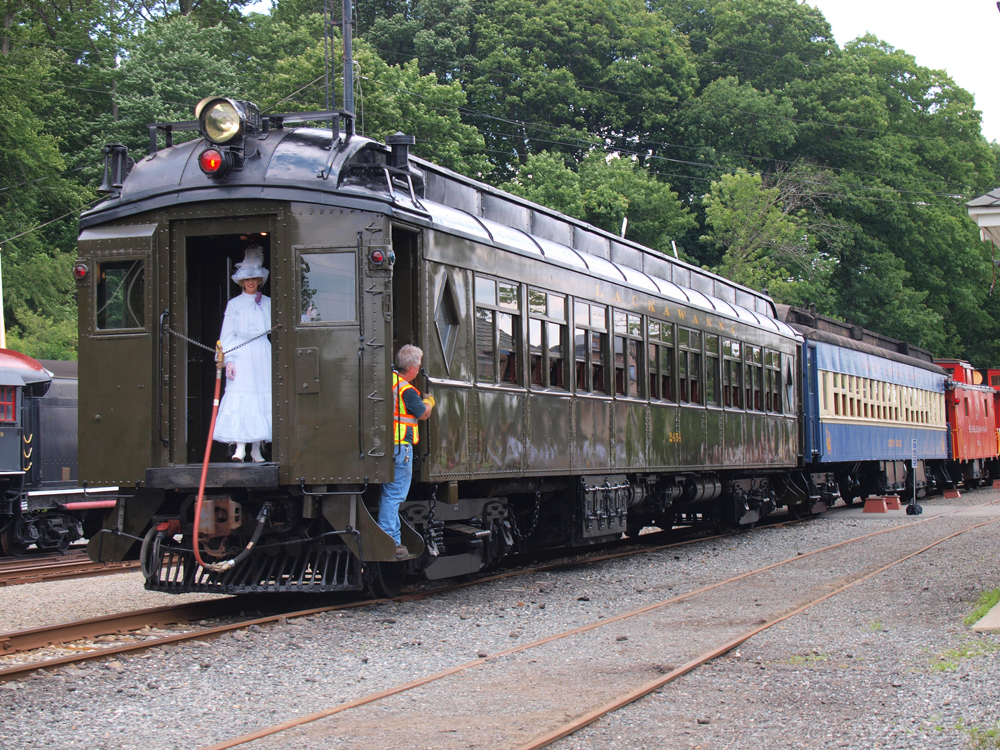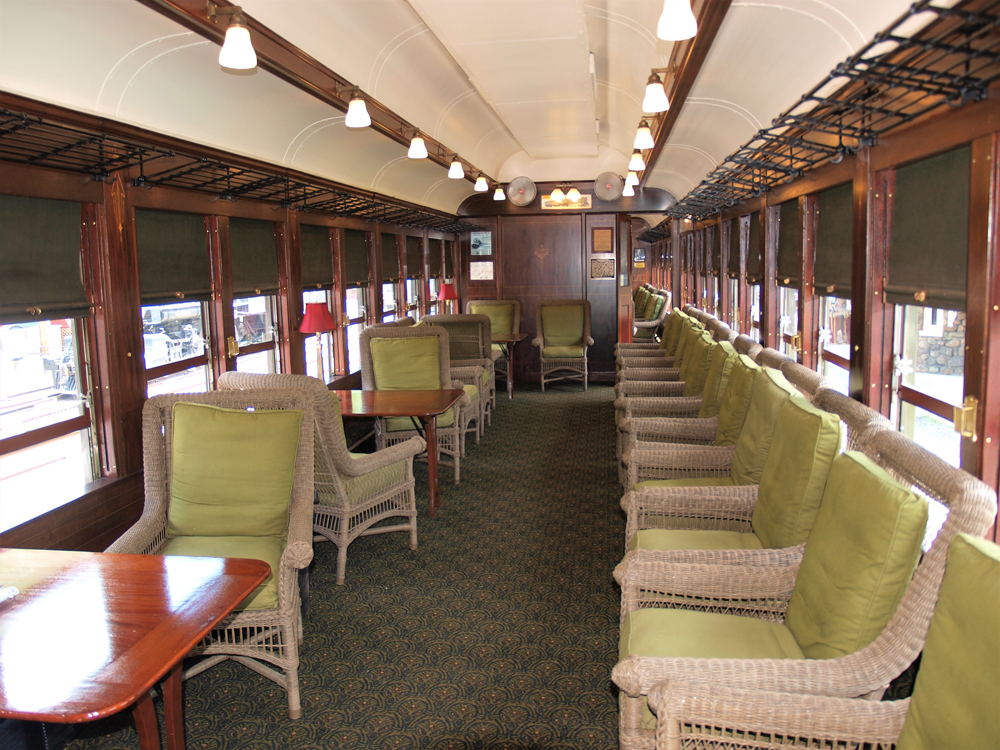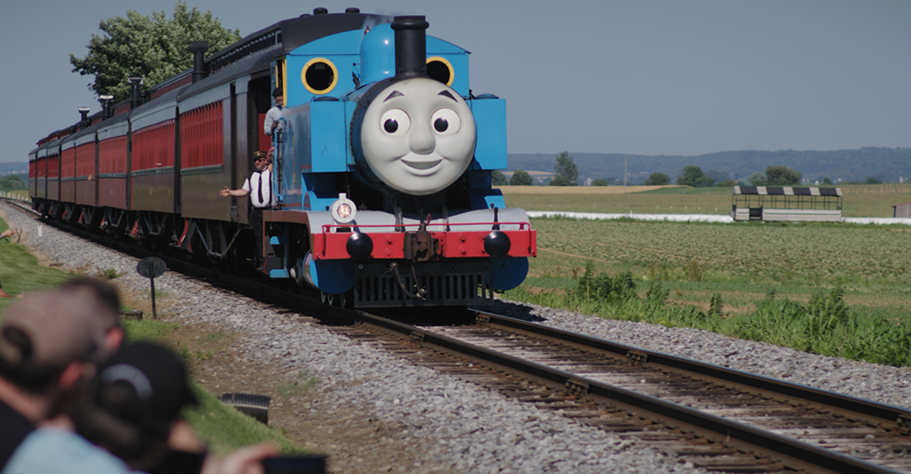
Whippany Railway Museum celebrates restoration of 1912 Lackawanna club car

New Jersey’s Whippany Railway Museum has unveiled Lackawanna Railroad Subscription Club Car, completing a seven-year project to restore the car built by Barney & Smith Car Co. of Dayton, Ohio, in 1912. Car No. 2454 was converted to electric propulsion in 1930 by American Car & Foundry Co. and assigned to the Delaware, Lackawanna & Western’s Hoboken-Gladstone run on a train known as the “Millionaire’s Express.” Retired in 1984, the car was donated to the museum by the United Railroad Historical Society in 2014 and restored by StarTrak, Inc., of Boonton, N.J., with thousands of hours of work by museum volunteers. The overhaul for public excursions exceeded $500,000 and was paid for by the New Jersey County Transportation Officials Association and Liberty Historic Railway, Inc. The interior has been restored to its 1912 appearance, with a few 1930s additions. More information on the museum is available here.
Anacortes, Wash., mayor appeals for funds to preserve ‘Tommy Thompson’ train
The city council in Anacortes, Wash., appears ready to turn down funding to preserve and display a landmark local narrow gauge train, leading the town’s mayor to call for community donors to help pay for the project. At issue, reports the Go Anacortes website, is the “Tommy Thompson train,” an 18-inch-gauge steam locomotive preserved and operated with cars built and by Thompson in the community from 1979 until his death in 1999. [see “Digest: Northwest Railway Museum to reopen …,” Trains News Wire, Sept. 4, 2020]. Thompson’s family subsequently donated the train to the city, but recently supported an unsuccessful effort to move the train to California where it would have been restored to operation [see “Digest: Groundbreaking hails significance …,” News Wire, Oct. 28, 2020]. The city at that time planned to place the train on static display, but now is balking at costs estimated at $140,000 to restore the train and its storage shed, as well as up to $87,000 in annual expenses.
STB releases updated Rail Heritage Map
The Surface Transportation Board’s Office of Environmental Analysis (OEA) has published an updated version of its Rail Heritage Map, 1,596 rail-related structures, buildings, and sites that are listed on the National Register of Historic Places. It also shows the estimated boundaries of 3,105 National Register-listed historic districts that overlap mapped active or abandoned rail lines or that have a known historical connection to railroads. The map is intended for use during consideration of railroad abandonment and construction cases. “Our new Rail Heritage Map was a painstakingly detailed project conducted by Environmental Protection Specialist Joshua Wayland,” STB Chairman Martin J. Oberman said in a press release. “We all applaud Josh’s impressive work to create and present this critical data in a user-friendly format for interested parties.” The map is available here; more information on STB responsibilities under the National Historic Preservation Act is available here.














The map is through, but hard to use because at the quadrant map level, you loose the particular locations. Wonder if a state by state version in more readable format could be published. Still, nice to see this.
These are an amazing series of maps. Didn’t know they were available. Now I can waste (per my wife) more hours looking at the internet. Love it.
Re Lackawanna club car – Beautiful job. Question: Does this car have de-activated traction motors, or did it just MU as a trailer when in service? Were there ever pantographs on the roof for DL&W catenary?
The Lackawanna MUs were set up Motor+Trailer-Motor+Trailer. The Motors were built as electric MUs, but most of the trailers were built as steam hauled coaches (or in this case a Parlor) and had control equipment added with a cab at one end. No pans, no traction motors.